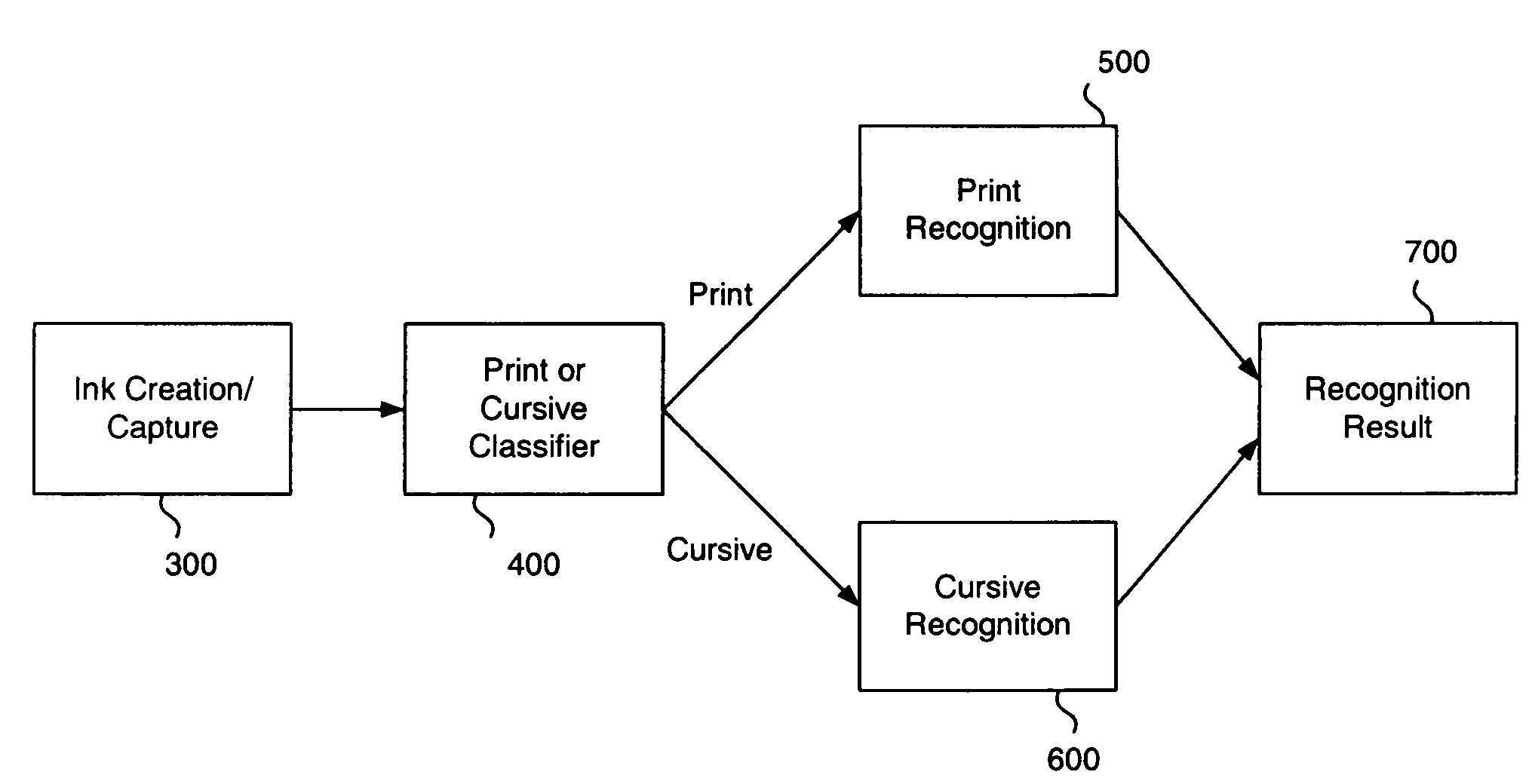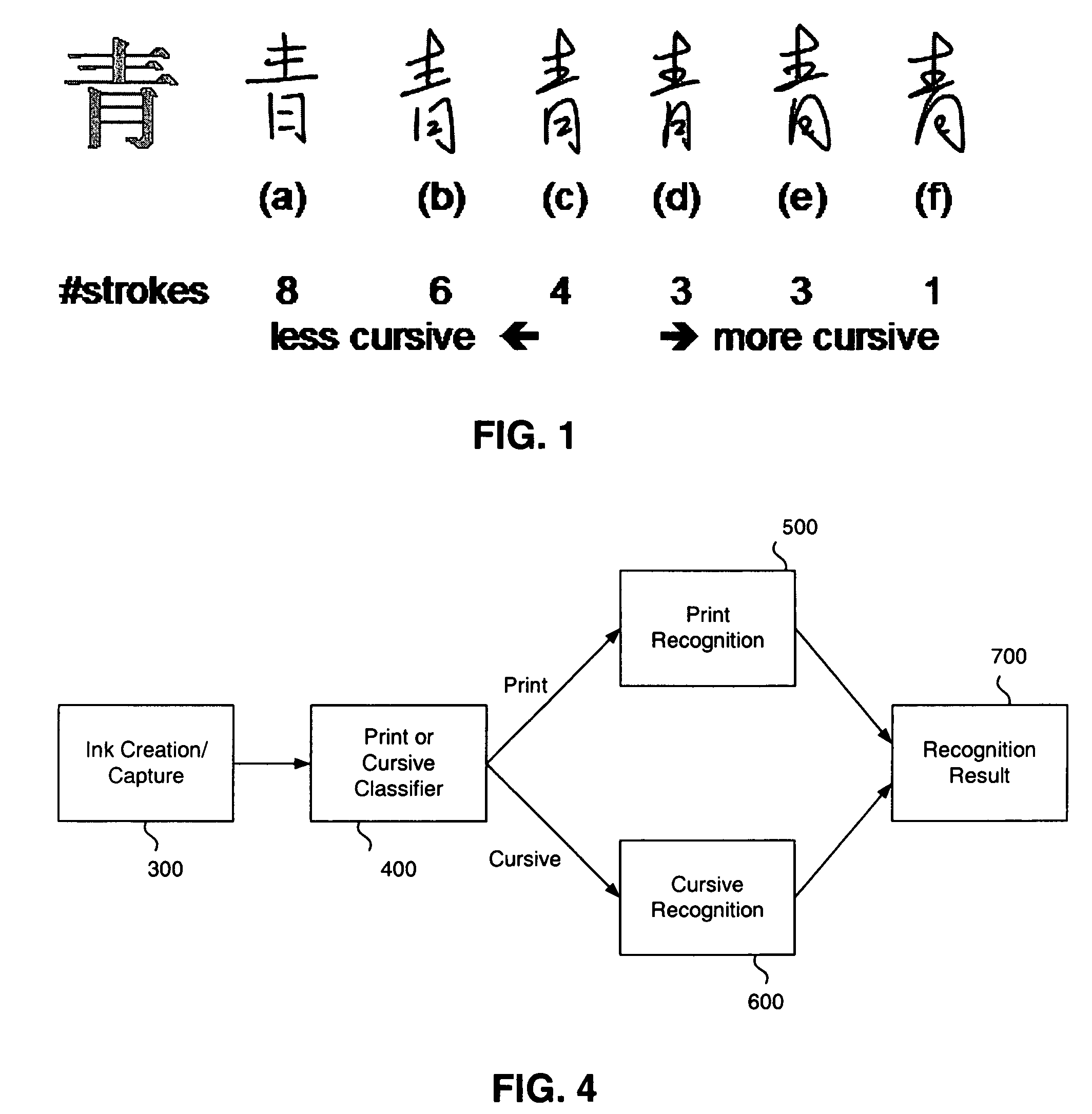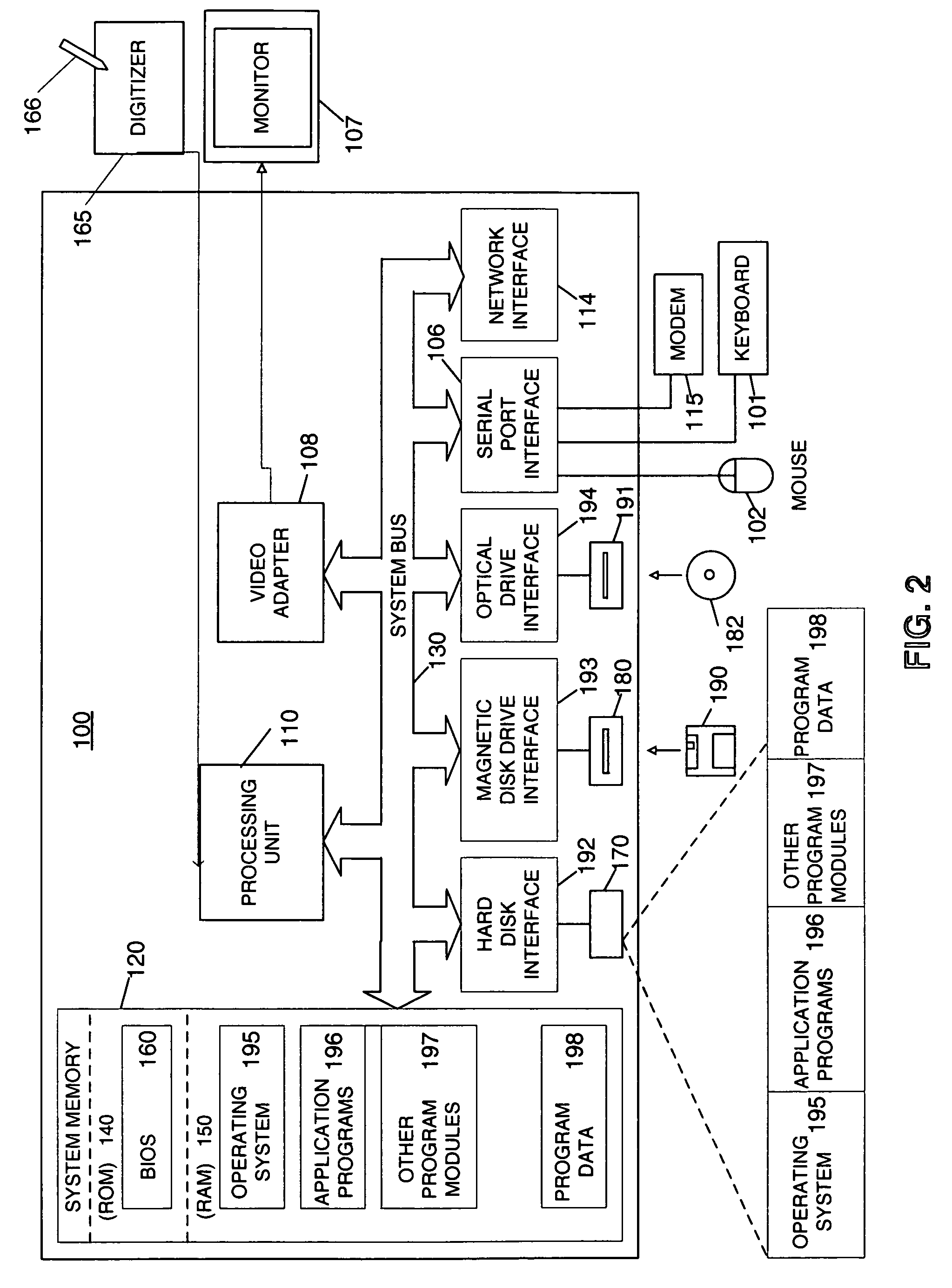Template-based cursive handwriting recognition
a cursive and template technology, applied in the field of automatic recognition of characters, can solve the problems of specialized keyboards for these languages that cannot be used properly, can be cumbersome, and require specialized training to properly use,
- Summary
- Abstract
- Description
- Claims
- Application Information
AI Technical Summary
Benefits of technology
Problems solved by technology
Method used
Image
Examples
Embodiment Construction
Terms
[0031]Unless otherwise specified, the following terms have the following meanings throughout this specification and the claims.
[0032]“Ink” or “electronic ink” refers to a sequence or a set of strokes with properties. The sequence of strokes may include strokes ordered, for example, by the time captured. Each stroke is comprised of a sequence of points, which may be represented using a variety of known techniques including Cartesian coordinates (X, Y), polar coordinates (r, Θ), and other techniques.
[0033]A “stroke” refers to a sequence or set of captured points. For example, when rendered, the sequence of points may be connected with lines. Alternatively, the stroke may be represented as a point and a sequence of vectors in the direction of the next point. A stroke is intended to encompass any representation of points or segments relating to ink, irrespective of the underlying representation of points and / or what connects the points.
[0034]A “character” is a letter or symbol havi...
PUM
 Login to View More
Login to View More Abstract
Description
Claims
Application Information
 Login to View More
Login to View More - R&D
- Intellectual Property
- Life Sciences
- Materials
- Tech Scout
- Unparalleled Data Quality
- Higher Quality Content
- 60% Fewer Hallucinations
Browse by: Latest US Patents, China's latest patents, Technical Efficacy Thesaurus, Application Domain, Technology Topic, Popular Technical Reports.
© 2025 PatSnap. All rights reserved.Legal|Privacy policy|Modern Slavery Act Transparency Statement|Sitemap|About US| Contact US: help@patsnap.com



